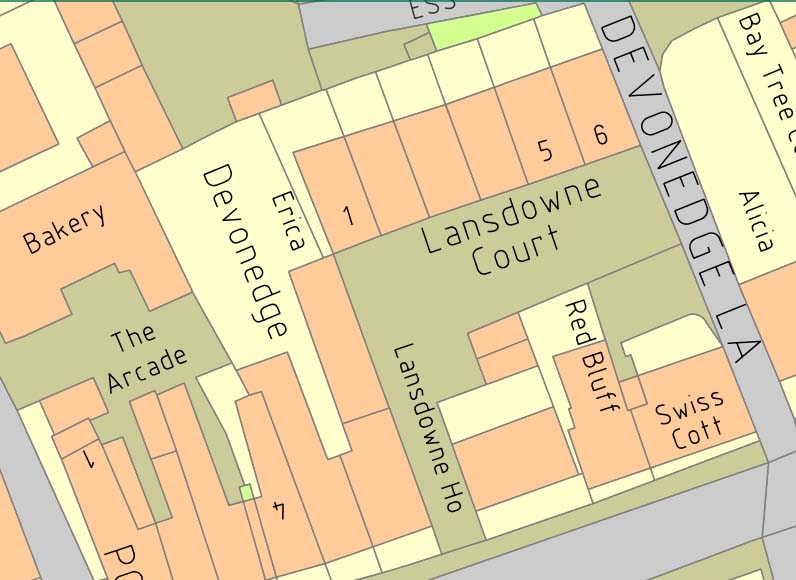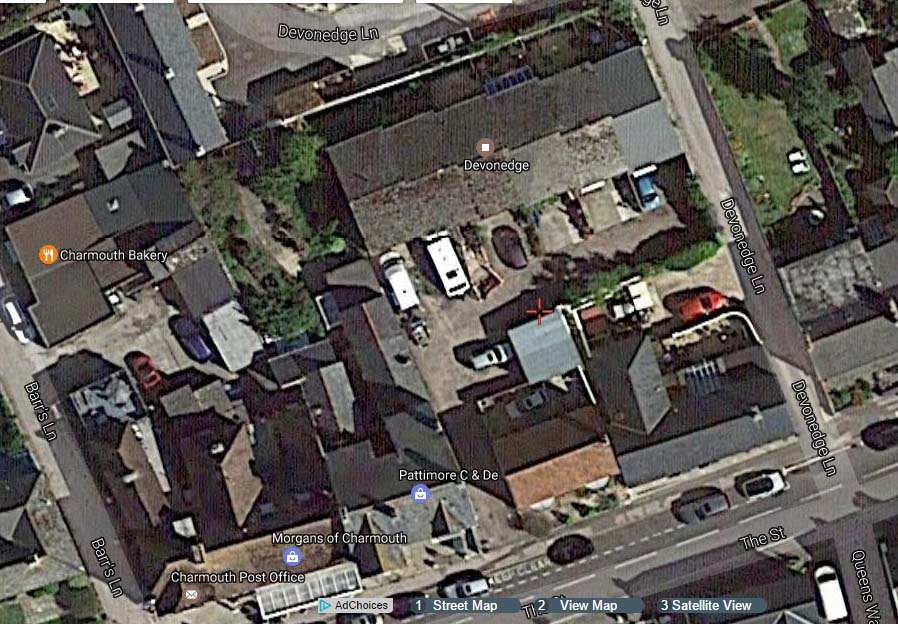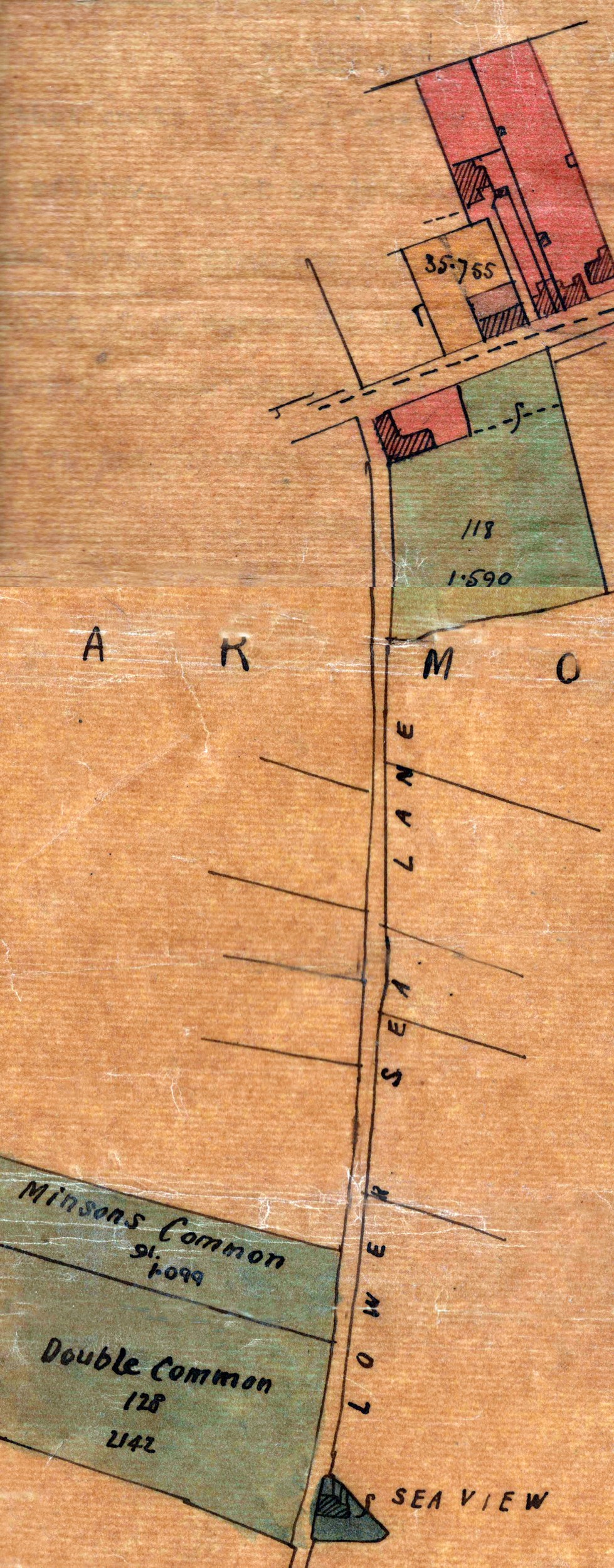|
THE WEB CHARMOUTH SITE |
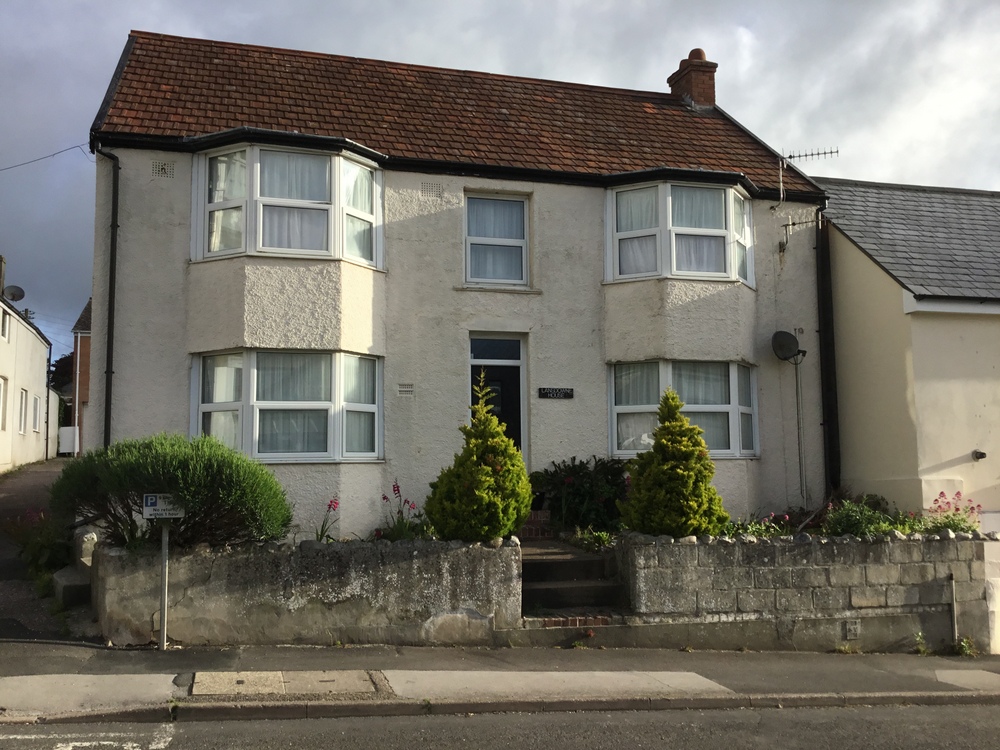
Lansdowne House was one of a group of three that were destroyed in a fire in the year 1895. They have been rebuilt since. The first originally called "Streets" is now the row of shops which includes The Post Office, Estate Agents (Fortnam, Smoth and Banwell) and Morgan's. The second which was called "Hansford's" is now "Devonedge". This is the history of the third of the buildings that was lost and is now known as "Lansdowne House", but formerly “Mables”.
Although the present boundary is the same as the early Tithe map of 1841. It would have originally had a larger area of half an acre stretching back to the present-day stone wall that runs parallel to The Street. These Burgage plots were created in 1290 by the Abbott of Forde who owned the village and wished to turn it into a Borough. It was not a great success with competition from Lyme Regis and Bridport and many of the original plots were amalgamated into larger more viable holdings.
A Comprehensive survey of the village was carried out in 1564 by Sir William Petre, who owned Charmouth at that time. Almost all the buildings along The Street had an acre of land as well as a further acre in the Common. Unfortunately, it is not possible to accurately pin point the occupier in that year.
We have to jump forward a century to a reference in a later document to previous owners which lists Hammet as the earliest. This is Peter Hammet who signs the "Protestation List" for 1641 as an oath of allegiance to King Charles l and the Church of England. He was a Blacksmith who would go down in history for observing in 1651 that a horse that he was shoeing had been shod in three counties including Worcester. For on 22nd September of that year King Charles was to attempt to flee these shores for France and freedom after the Battle of Worcester”. After waiting all night at “The Queens Armes” the boat he was to take did not appear and he rode on to Bridport. William Ellesdon who lived in The Manor House opposite the church assisted the King and was later rewarded by him with a life pension. He gave a first-hand account of the events shortly afterwards which is now held in The Bodleian Library and there follows an extract relating to Hammet.
“on the same morning whilst Peters was with me at Lyme he went to speak with the then Parson of Charmouth (Bartholomew Wesley), intending to communicate his suspicions to him, found no opportunity to speak with him, he being at that time engaged in prayer with his family. Another remarkable passage we must of necessity here insist which was this: My Lord Wilmott's horse wanting a shoe, in Peter's, his absence, the Hostler led him to one Hammets a Smith then living in Charmouth, who viewing the remaining shoes, said, this horse hath but three shoes on and they were set in 3 several Counties & one of them in Worcestershire. Which speech of his fully confirmed the Hostler in his former opinion. By this time Harry Peters being returned from Lyme, my Lord Willmot's horse shod, on the advertisement that was sent him, his Majesty immediately departed towards Bridport”.
The document relating to previous owners of the house has Edward Mable as the next occupant. His name appears on the list of owners for the Hearth Tax in 1663 with a total of three chimneys. A deed for 1674 describes him as a Soap Maker and the property was to remain in his family until 1753 when Elizabeth Mabel leaves it to William Coombe, and it is her name that appears on the Poor Rates List for that year. William was to be Rector of Charmouth for 35 years from 1748 until 1783. Although he was to own this house he in fact lived next door on the site of what is now “Devon Edge” which he rented on a long lease from the Hansford family. To follow through the history of these two buildings one has to look under “Mables” and “Hansfords” in the Land Tax and Poor Rates Lists for Charmouth as that was the name they were to be called long after their original owners had passed on. In 1780 John Randall disputed the Poor Rates he was paying on his house, then known as “Yandovers” and today “Little Lodge”. The Court case relating to this has helped me with the early history as it is very descriptive of all the houses and their owners. It details that: “Mr Coombe is also rated for a tenement late Elizabeth Mabells (otherwise Hammetts) who gave it him in the year 1753. She died in June of that year. And Mr Combe has been rated for it ever since by the name of Mr. Combe for Mabel's 1d”.
A map of the village in 1783 map has long since been lost but its record book survived and amongst the records is no.88.Freehold, Rev. B. Coombe, Late Mables (£3-0-0d) 0a 1r 6p. This area equates with the later 1841 Tithe map and today.
The Reverend William Coombe came from a wealthy family originating from Shepton Mallet, whose memorials can still be seen in that town`s church. He married Catherine Coffin and they were to have three children; Frances, Jane and Brian. It is Brian who follows in his father`s footsteps and becomes Rector of Catherston on his father’s death in 1782. He should have also been Rector of Charmouth, but the Patron at that time was Francis Phipps Henvill who lived in St. Kitts and instead appointed his kinsman, John Audain to this position. But Audain soon tired of the village and returned to the West Indies leaving his Curate, Brian Coombe in charge.
Brian`s father left him a fortune and he became the largest landowner in the village by purchasing Backlands Farm, Stonebarrow Farm, “Streets” and many other properties. He never married and lived with his mother, Catherine who died in 1814. His Aunt was to rent “Lansdowne House” from him and her name appears in The Poor Rates and Land Tax under “Mables” She outlived her nephew Brian who was to die in 1818, aged 60. He left his large estate to his nieces: Frances Purlement, Jane Purlement, Catherine Williams and Frances Warren and £200 a year to his Aunt. She died in 1822 aged 87, and was buried at Netherbury. Her own Will was very generous to her servants, Rachel and Edward Woonton, who continued to occupy the house. Edward appears in the List of Voters for the village for many years as a Gardener. Their slate slab memorial at St. Andrews Church is inscribed as follows: In memory of EDWARD WOONTON/of this parish who departed/this life the 25* day of June/1840 aged 64 years/Also of RACHEL Relict of the above who departed/this life the 30* day of Oct 1841 aged 68 years.
Pigots Directory for 1830 shows John Felstone as a Shopkeeper at the property. He was a Shoemaker and was married to Sarah Potter. They had a large family whose baptisms are listed in the records of The United Reform Church. He was to die in 1839 and his wife is shown in the Census 2 years later as a widowed Shoe maker, aged 36 with 4 children.
The Rector at that time was John Dixon Hales who had just the year before had the Village Church demolished and rebuilt. He was to purchase the property from them. An abstract from the deeds as follows:
31st January 1837 a lease and release between Henry Gobins Kirsteman (Trustee) of 1st part and John Dixon Hales of 2nd part and Thomas Kingston Bayly of 3rd part. All that garden plot (the no. 46) situate and lying at Charmouth Street formerly in the occupation of Mary Coffin and Edward Woonton, but lately in occupation of Felstone.The 1841 Tithe Map shows Sarah Felstone as renting the house from John Dixon Hales, who had by then resigned as Rector to take up a similar position at Richmond in Surrey, where he was to remain until his death in 1879. He bought further property in the village from William Burnard in 1843 which included Pear Close and the New Inn on either side of The Street. These were to remain in his family until the beginning of the 20th Century.
Sarah and her family were to rent the property from the Hales for the rest of the century. The next census in 1851 describes her as a nurse and her son, Charles aged 23 as a shoemaker. Twenty years later it is her daughter Emma who is a Draper and she a Grocer. The Kelly`s Directory of 1880 has Miss Emma Felstone as a Linen and Woollen Draper and her mother Mrs Sarah Felstone as a Grocer and Tea Dealer. Sarah dies in 1884 aged 78 and her daughter Emma may have continued to live and run her shop from Lansdowne House for a while. The next Census for 1891 list the property as unoccupied. This is borne out by the Bridport Times report of the devastating fire that swept through it and its neighbours on July12 1895.
“On Sunday afternoon, about three o'clock, smoke was observed issuing from the thatched roof of an uninhabited house belonging to Mr. Pryer, builder. An alarm was at once raised, but the fire had got such a firm hold of the roof that it was found impossible to save it. Efforts were directed to save the adjoining house of Mr. Coles, baker, which was also thatched, but in spite of the exertions of a ready band of helpers, the fire obtained the mastery of the house. A considerable quantity of Mr. Coles furniture and stock was saved and stored in the School Room, which fortunately available, as the school holidays are now on. An uninhabited house, adjoin Mr. Coles, next caught fire, and there was great fear that an adjacent block of thatched cottages would be involved in the conflagration. By pulling down the walls of the house next Mr. Coles the progress of the flames was checked, but the three houses were completely burnt out. Mr. Pryers house and that of Mr. Coles were insured, but we are sorry to say, wholly inadequate to cover the loss incurred by the fire. The third house belonging to Major General Hales was uninsured.
The uninhabited house referred to is Lansdowne House at that time owned by John Hales son, Major General Arthur Hales. He later sold it to Francis Coles, the Baker who left it empty until selling it in 1921 it to Clifford Stapleforth who was running a Garage from the Stables at the rear of the Coach and Horses. He submitted detailed plans for the house we see today in 1923, which can still be seen in the Record Office in Dorchester. It was set back from the road so as not to obscure a window on the adjoining “Wander Inn”. To reduce the risk of another fire a passage way was created to the west of the house which led to workshops at the back.
Not long after he had built the Garage he was to sell it in 1925. Reg Pavey relates that the next owner Charles Woollard was unaware that the site opposite was soon to be a Garage run by local business man Billy Gear when he bought it. Photographs of the time when he owned it show the garages with their petrol pumps along their fronts. The Kellys directory for 1927 have Woollards Garage with Telephone number 7 and Gears at number 8. Clifford Stapleforth went on to buy the fields where the shops are on either side of The Street in 1932 on the death of Harry Pryer and develop them. He also owned the Queens Armes, now the Abbotts House and Uplyme Garage.
The Woollards were not there for long and sold the business o George Furnis in 1931 who continued until the Second World War. Dennis and Beryl Jerrard are shown in the Electoral Roll as living at Lansdowne House from 1947. Billy Gear was to later buy his competition and rent it out. Gerald and Brenda Rattenbury lived there from 1955 until 1965.A photograph of him is shown here leaning against a smashed-up car. Cecil and Florence Stork follow him until 1980. The more recent history is more difficult to locate with the lack of directories and records. All I can go on is the fact that for a time it was a Bakers, then a Wine Shop and Estate Agent. The workshops behind it were rebuilt as a terrace of houses which now goes by the name of “Lansdowne Court” and the property reverted to being a house.
If readers can provide me with more information I would be very grateful to complete the story. I wish to thank Keith Wiscombe, Mary Davis, Ron and Jean Dampier for their assistance with the recent history. If you wish to find out more about this and other buildings in Charmouth - do go to my website freshford.com and use the search engine or just google it.
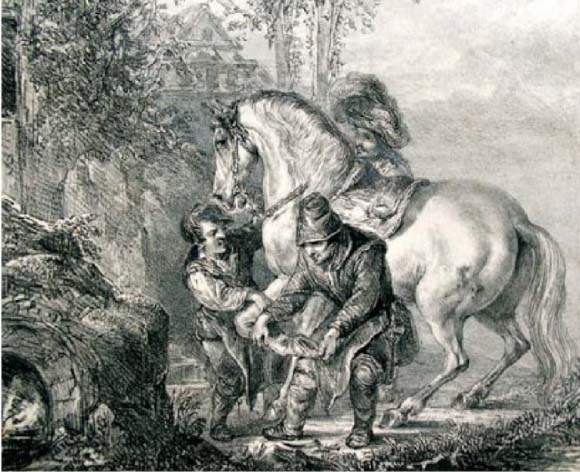


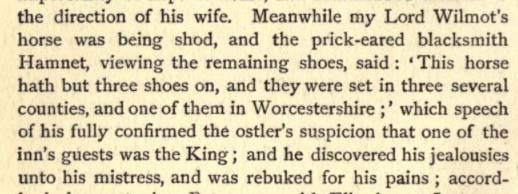


1821 Poor Rates showing Miss Mary Coffin renting from Warrens who are trustees for Brian Coombes. Matthew Lock is renting the Charity Lands where he builds some cottages on them. Edward Woonton owns a house (t.no. 192) 4 perches which he is renting to Matthew Lock



Kesterman, Henry ,Mr. - Edward Woonton- Orchard - 2d £ 0-3-0
Kesterman,Mr. - Edward Woonton- House and Garden - 6d £ 0-9-0
Kesterman,Mr. - William Burnard - Park Close - 3d £ 0-4-6
Kesterman,Mr. - William Love - Common - 3d £ 0-4-6
31st January 1837 a lease and release between Henry Gobins Kirsteman of 1st part and John Dixon Hales of 2nd part and Thomas Kingston Bayly of 3rd part. All that garden plot situate and lying at Charmouth Street formerly in the occupation of Mary Coffin and Edward Wootton, but lately in occupation of Felstone are shown in yellow. Also all those two plots of land together containing 1 acre 3 roods 6 perches coloured green. All that close meadow or pasture now known as Double Common adjoining Sea Lane in parish of Charmouth coloured light blue (tithe no. 46).
All that small piece of ground formerly called The Potato Plot situate opposite the close called Double Common being divided from a road together with the messuage there on erected coloured dark blue . (tithe no. 226).
All that piece of land adjoining the Main Street containing about 3 roods 19perches together with the cottages and buildings erected Theron which is coloured Pink. (tithe no. 44).
19th January 1843.All that parcel of land contains 9 perches or thereabouts adjoining the Main Street and the cottages and buildings erected Theron which said piece or parcel of land formerly stood a messuage erected by one Emanuel Symes and afterwards called The New Inn formerly in the occupation of John Hodder which are coloured brown on the map. For a term of 2000 years between William Burnard and John Dixon Hales.
All that Carpenters Shop coloured red. Assigned for a term of 1000 years in occupation of Harry William Pryer.(tithe no. 204).
All that acre of meadow called Minsons Common coloured light blue. Assigned for 2000 years in occupation of F.Coles (tithe no. 179).
19th January 1843 J.D. Hales bought from William Burnard the messuage known as the New Inn, which then consisted of two cottages and gardens let to Frederick Coles and Martha Gordge. It was for the residue of a term of 2000 years granted in 1656 between John and Ann Bragge for the one part and John Sampson of the other part. John Hales also bought from William Burnard a Stable for many years past converted carpenters shop situate in Mill Lane otherwise Seaside Lane ( Lower Sea Lane) which was then in the occupation of Harry William Pryer. It was assigned for the residue of 1000 years granted from 13th November 1771 between Benedicta Durston of the one part and Thomas Richard of the other part for a yearly rent of 6d.
25th December 1843 J.D. Hales bought one acre of meadow ground formerly known as "The Common" , but then as Minsons Common situate in Mill Lane, Charmouth leased to Fredrick Coles and was assigned for the residue of a term of 2000 years granted in a lease dated 1 September 1769 between Robert Minson of the one part and Joseph Durston of the other part . (tithe no. 179).
Family still own it in 1906.
John Dixon Hales of Charmouth Lodge left his estate to two sons John Hales and Arthur Hales equally.
Tithe no. 47 Bejamin Adney Symes renting to John Coles. The area is 2 roods 22 perches
Tithe no. 44 Rev. John Hales renting Orchard to Joseph Hodges. The area is 3 roods 19 perches
Tithe no. 46 Rev. John Hales renting to Sarah Felstone. The area is 1 roods 4 perches
Tithe no. 176 Rev. John Hales renting Double Common to Joseph Cozens. The area is 2 acres
Tithe no. 204 Rev. William Burnard is renting a Carpenters Shop to John Carter. The area is 4 perches
Tithe no. 205 Rev. John Hales renting a garden to John Carter. The area is 17 perches
Tithe no. 206 Rev. John Hales renting a field called Pear Close to John Coles. The area is 1 acre 2 roods 20 perches
Tithe no. 226 Rev. John Hales renting Garden Plot to Sarah Felstone. The area is 16 perches
all that the said Close of Meadow or pasture Ground now called Pear Close but lately know by the name of Edwards's Close containing 1 acre 2 roods 36 perches and being in Charmouth aforesaid and now in the occupation of William Burnard as tenant thereof And also all that one close of Meadow or Pasture Ground now called the Double Common but therefore known by the Name of Westleys and Braggs Closes containing 2 acres 25 perches also in Charmouth now in occupation of said William Stephens as tenant therof Also all that the said small Garden containing about 20 perches also situate in Charmouth aforesaid bounded by the Turnpike Road leading to Axminster and opposite to the said Dwelling House in the occupation of Said Mary Coffin which small garden is now held by Elizabeth Rickard and Mary Rickard for one life and also all that the said small piece or strip of Ground in Charmouth aforesaid now called the Potato Plot containing about 11 perches opposite the Close called the Single Common being divided therefore by the Road or Public Highway now in the occupation of the said Mary Coffin which said closes or pieces of land called Pear Close the Double Common of the same James Warden in the year 1788 by the said Brian Combe deceased
1916 July 12th 1895 An uninhabited house, adjoin Mr. Coles, next caught fire, and there was great fear that an adjacent block of thatched cottages would be involved in the conflagration. By pulling down the walls of the house next Mr. Coles the progress of the flames was checked, but the three houses were completely burnt out. Mr. Prayers house and that of Mr. Coles were insured, but we are sorry to say, wholly inadequate to cover the loss incurred by the fire. The third house belonging to Major General Hales was uninsured.
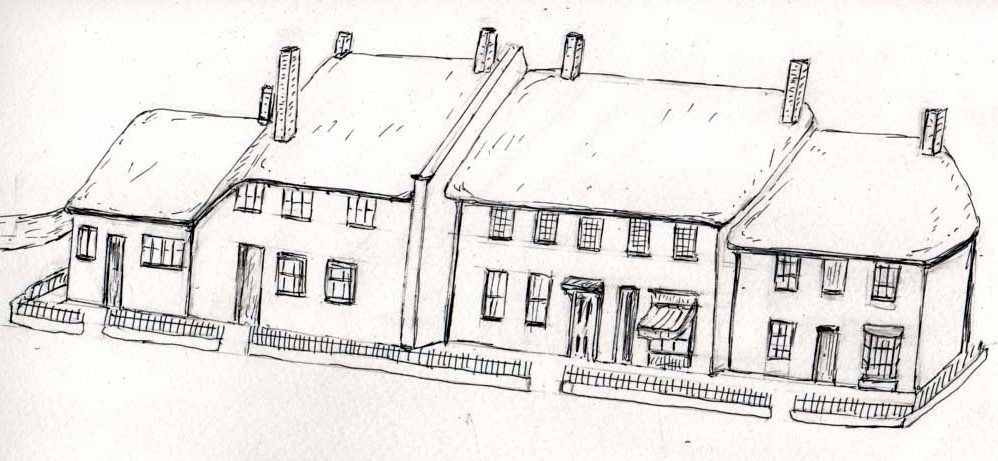

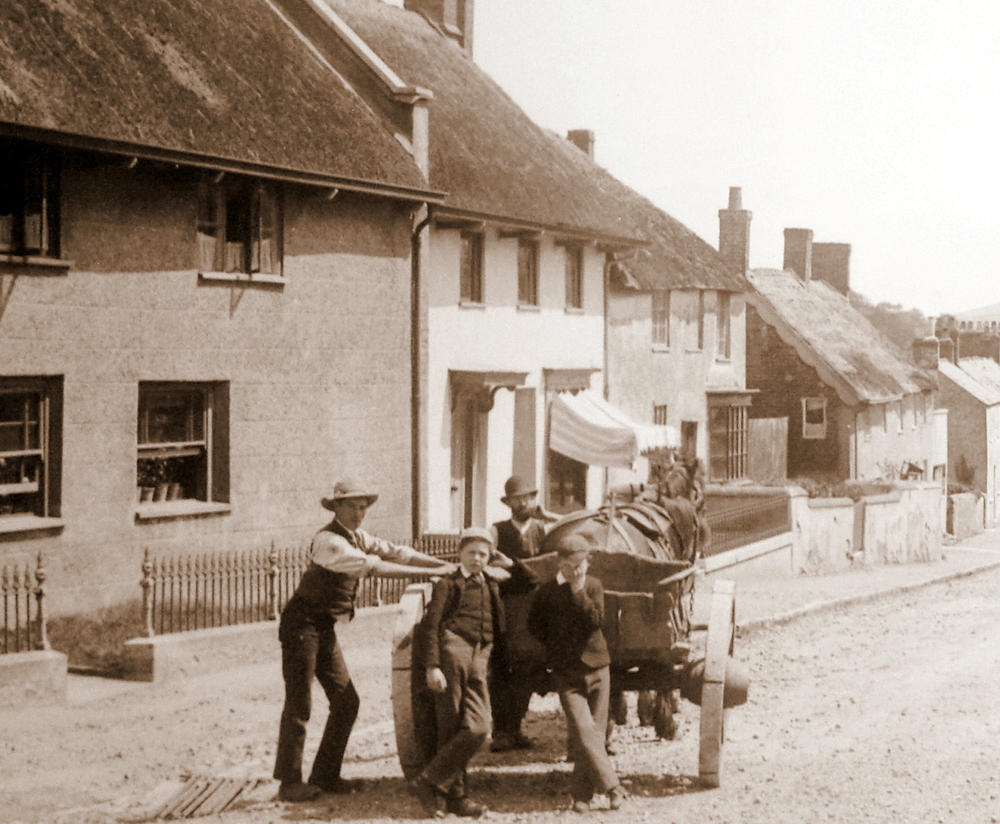
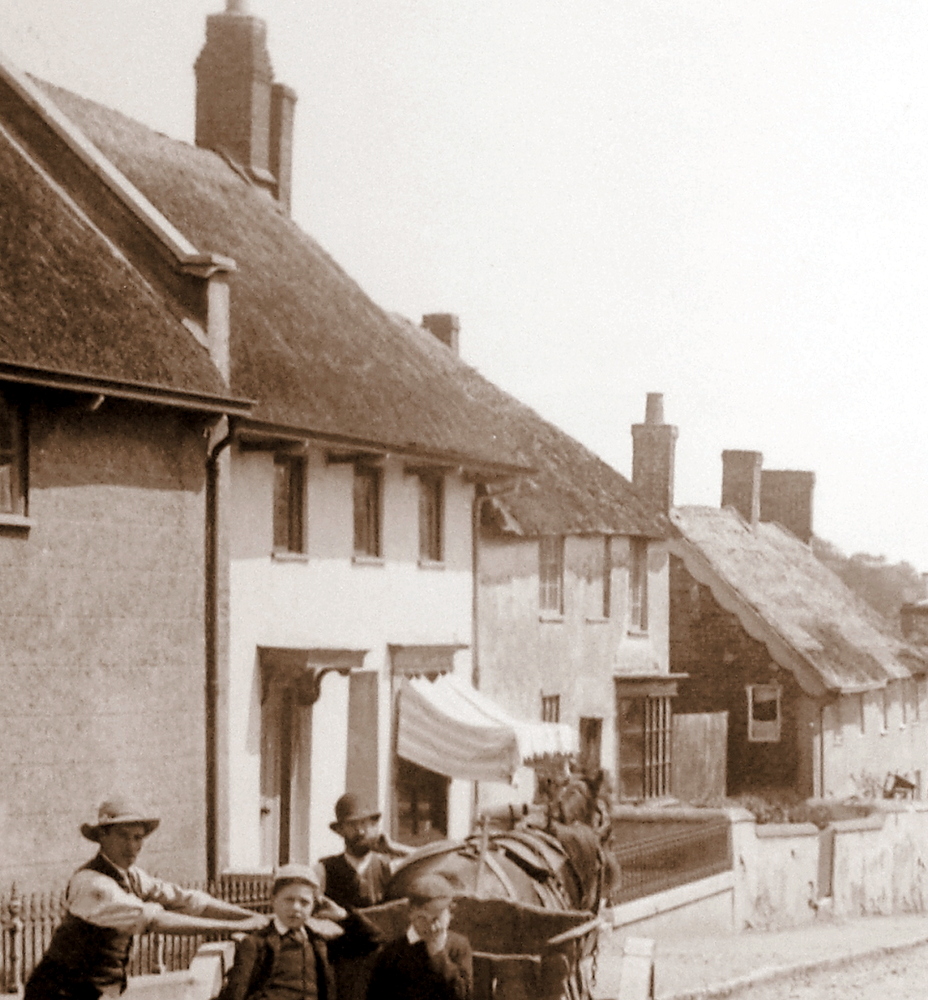
.jpg)
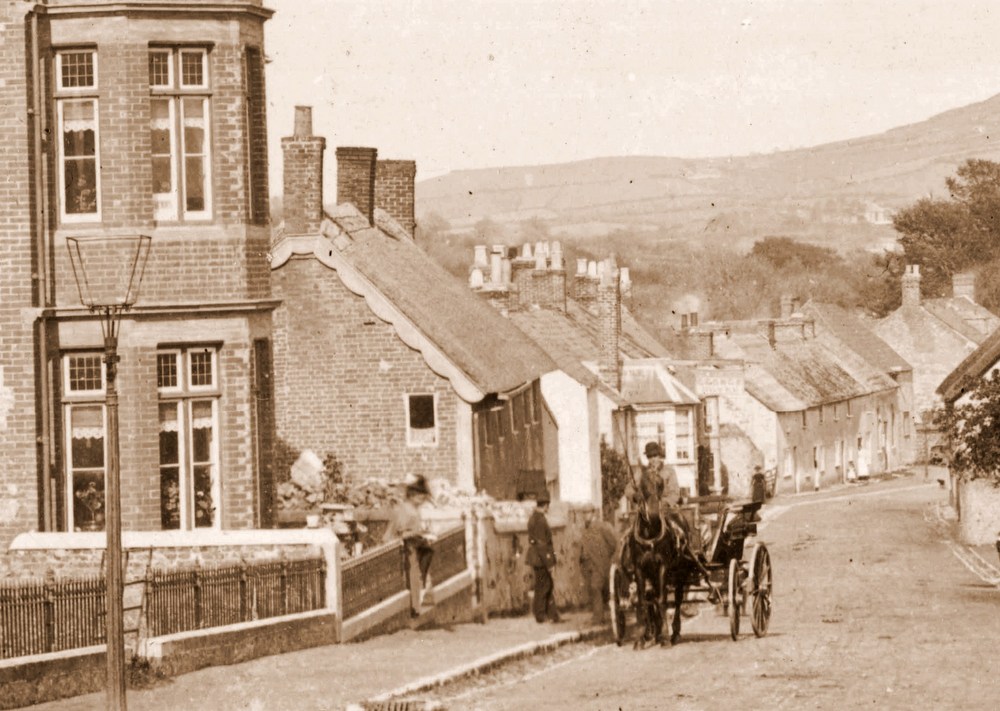
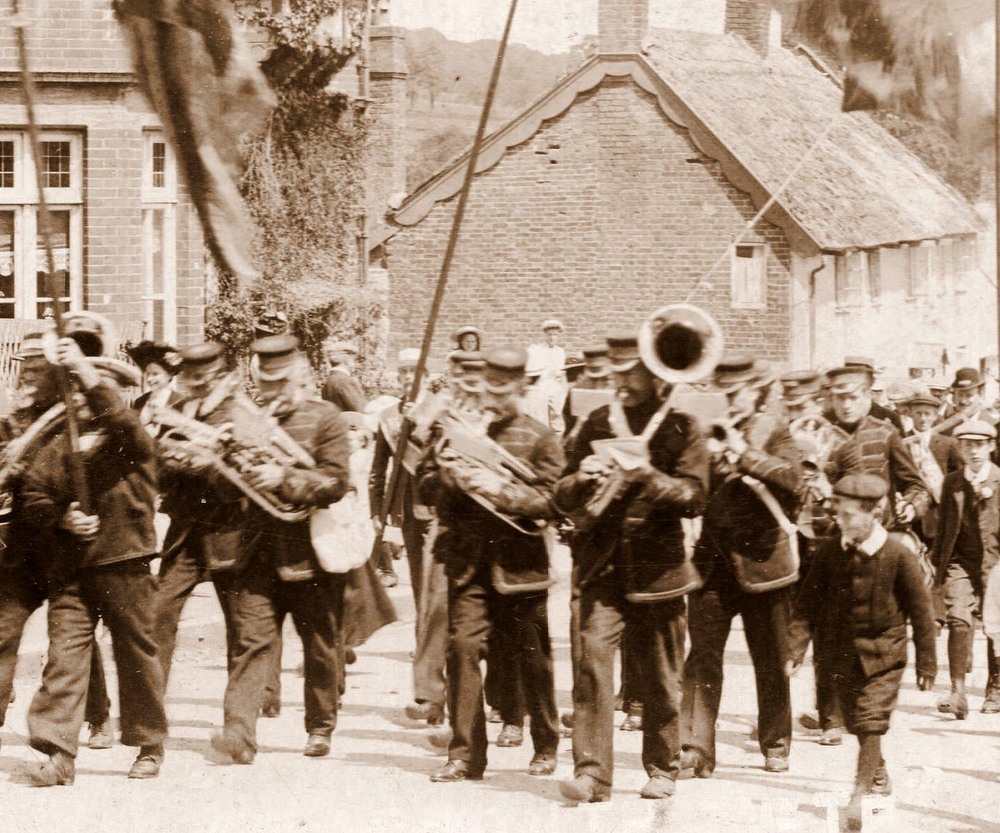
.jpg)
.jpg)
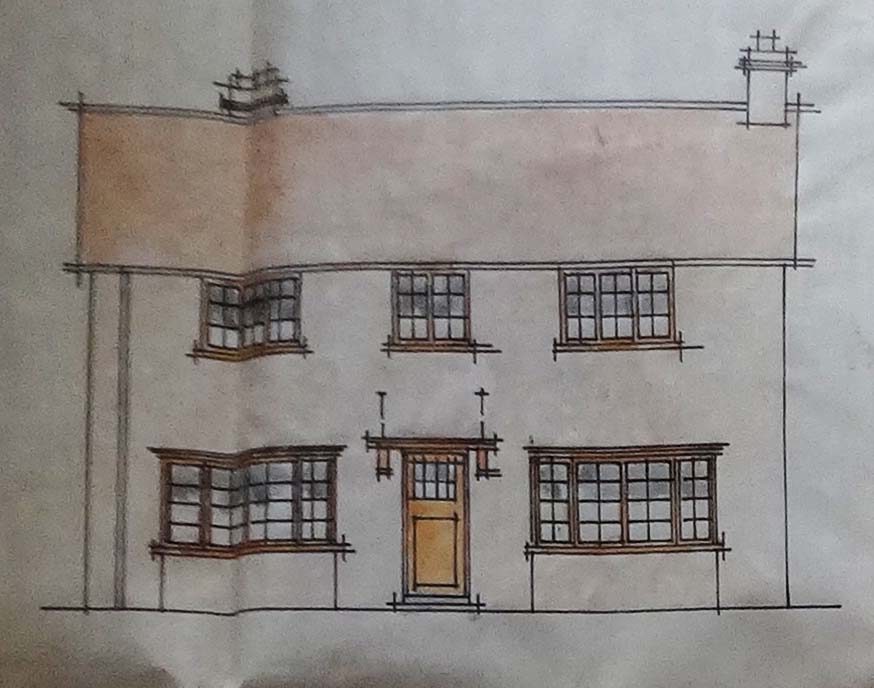
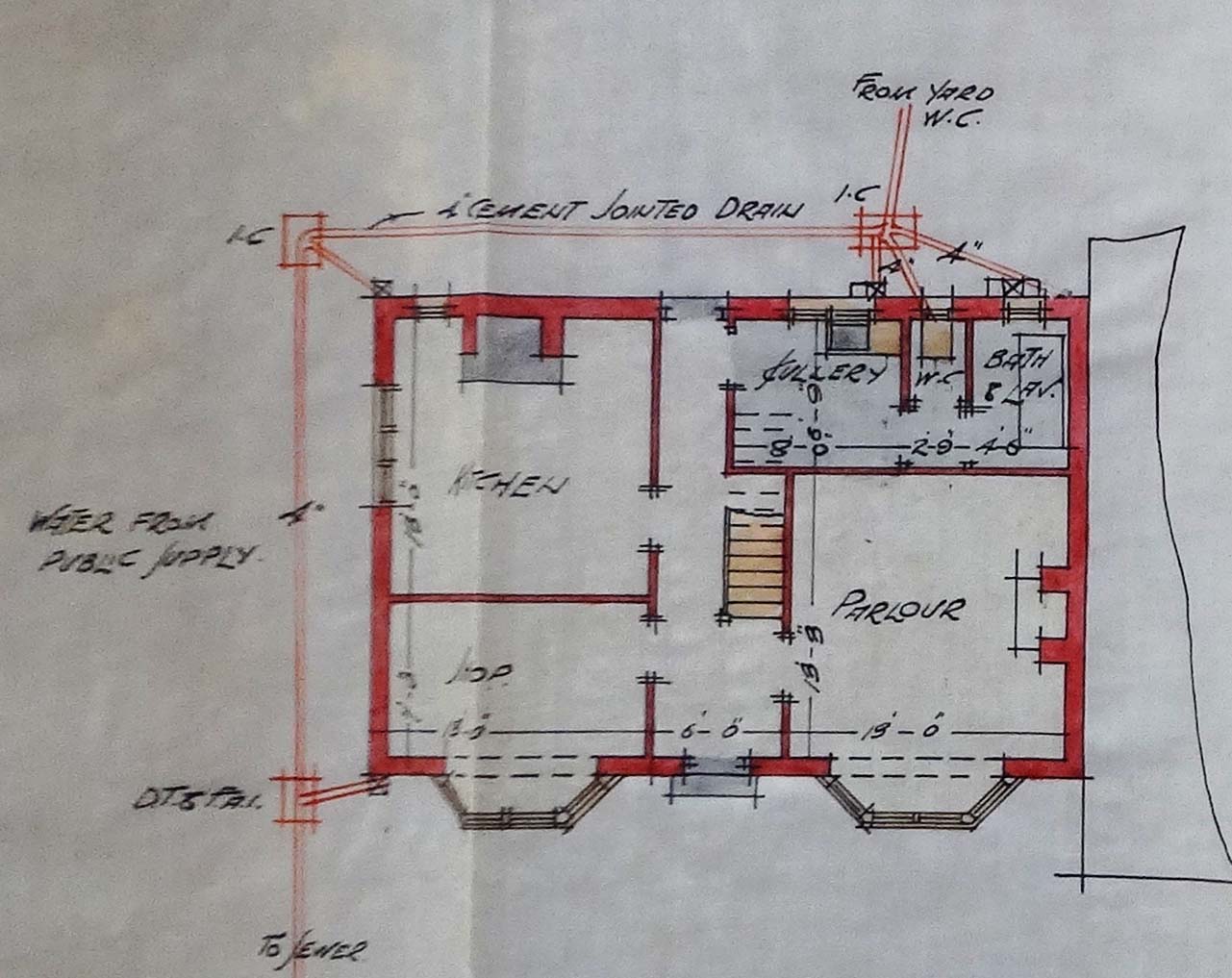
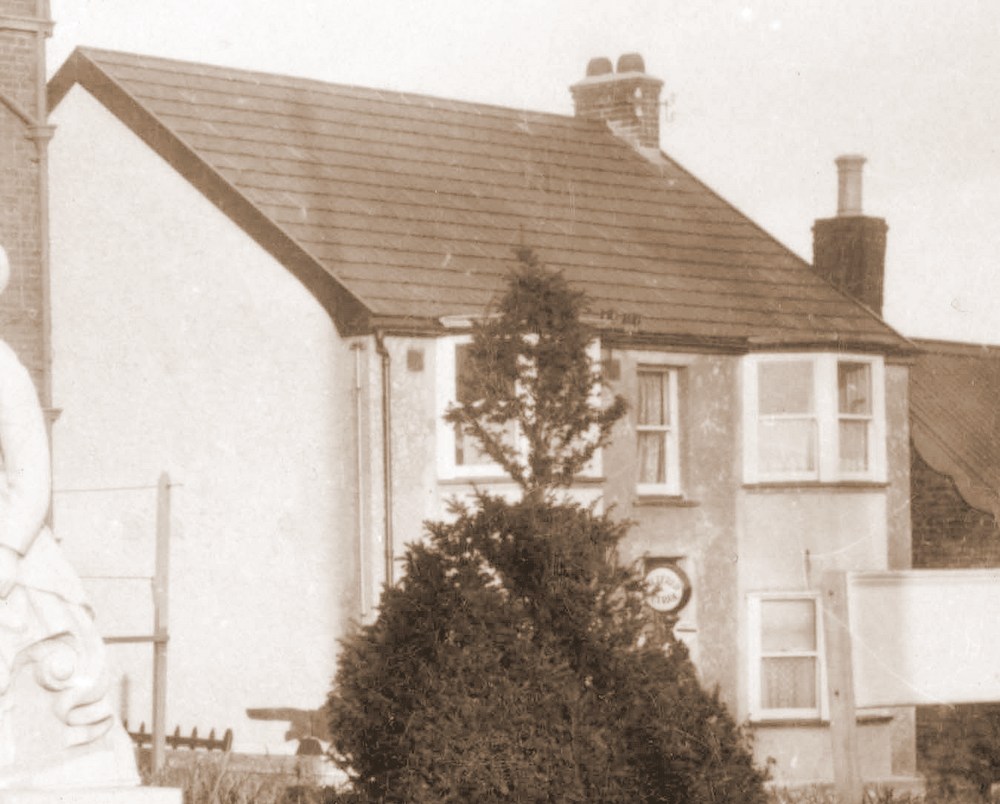
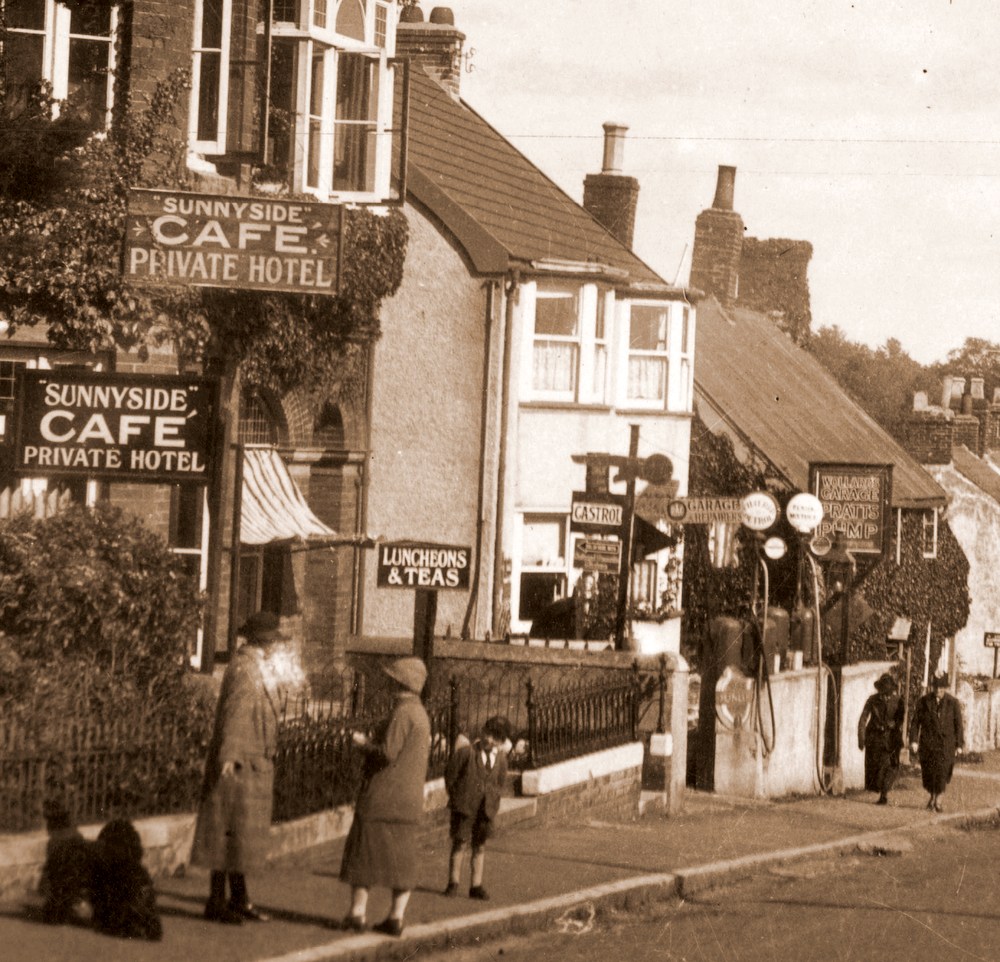
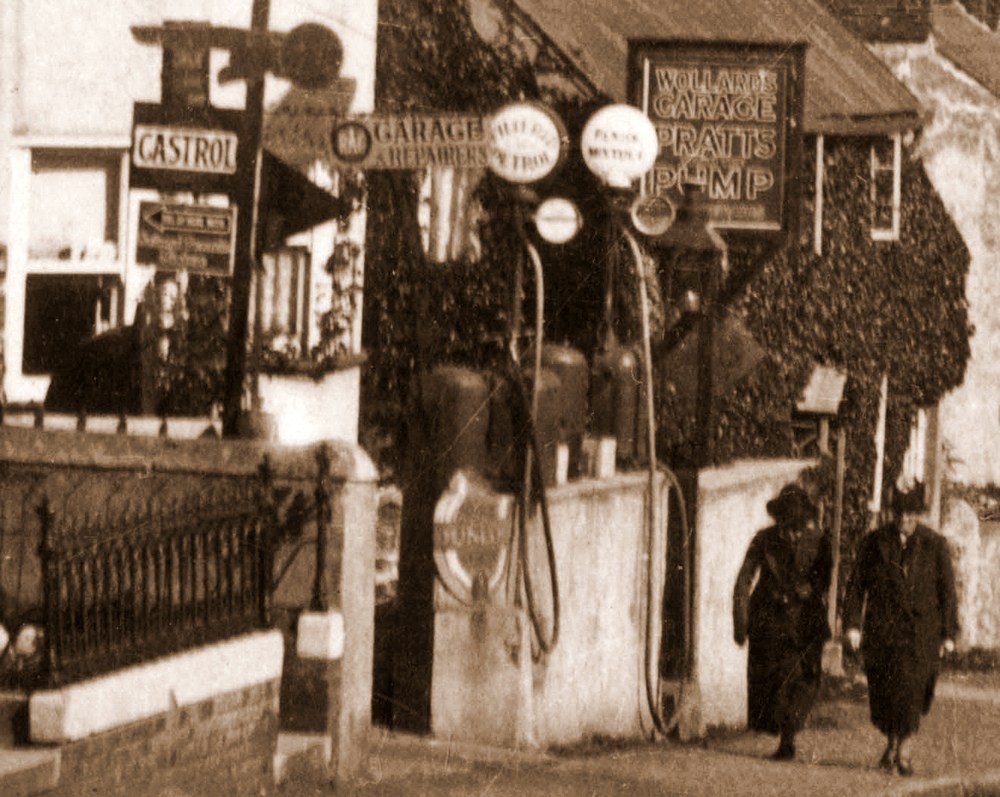



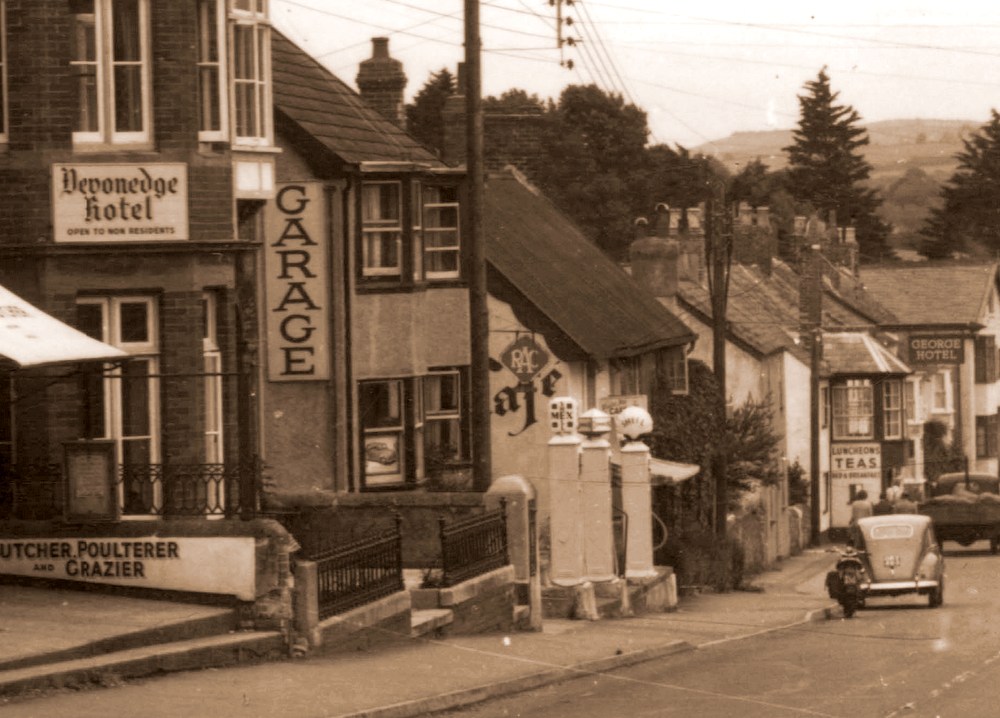
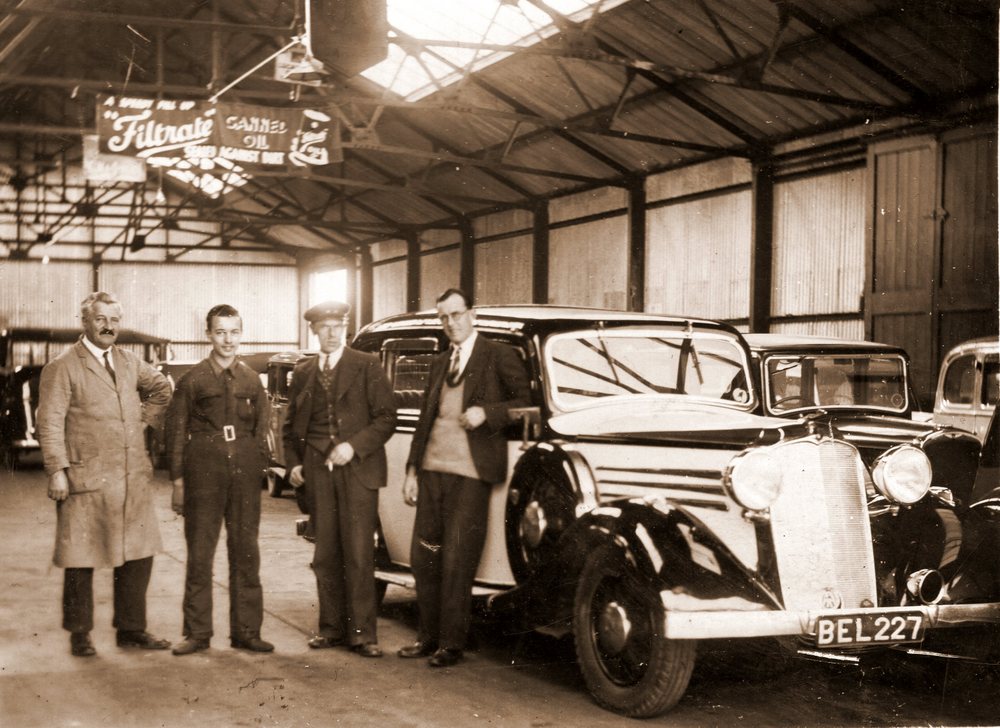
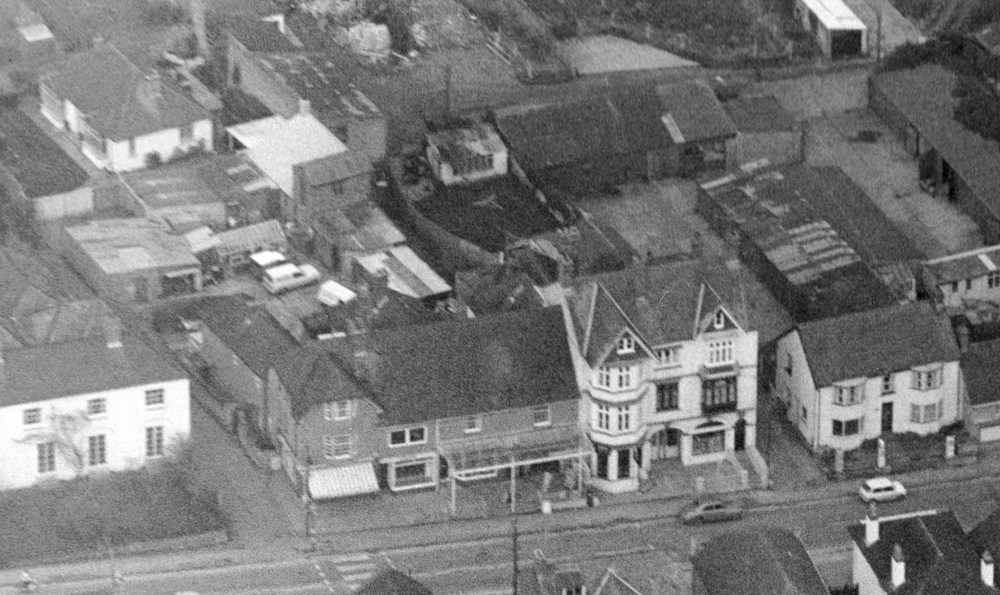
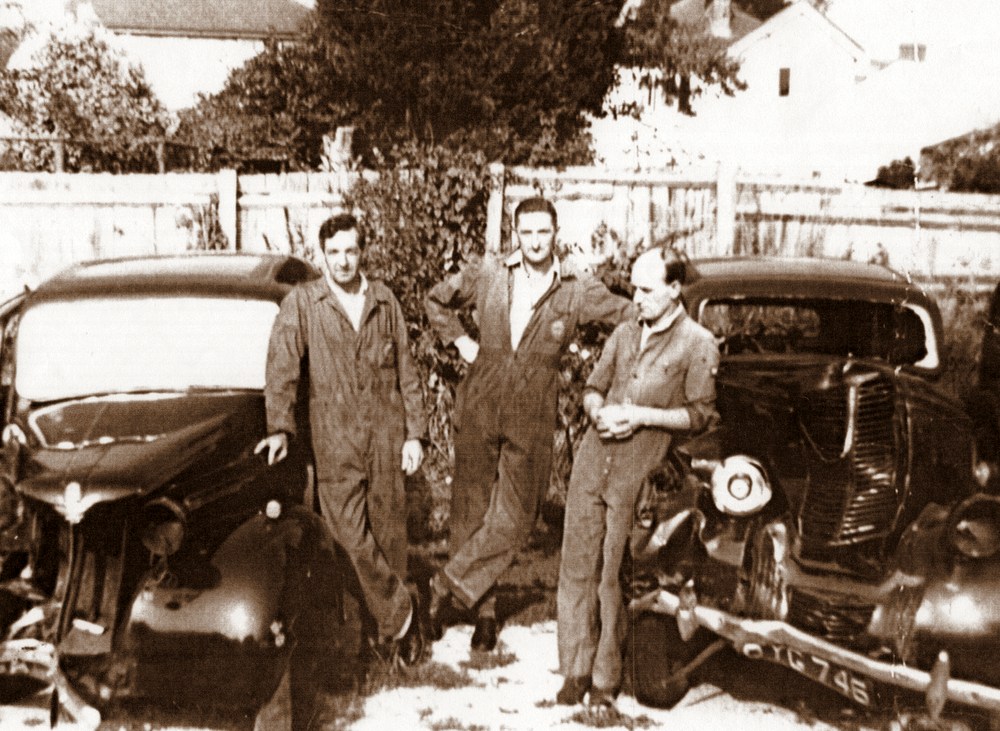


44 Orchard to Joseph Hodges. The area is 3 roods 19 perches
46 Shop and Garden rented to Sarah Felstone. The area is 1 roods 4 perches
176 Double Common to Joseph Cozens. The area is 2 acres
205 a garden to John Carter. The area is 17 perches
206 a field called Pear Close to John Coles. The area is 1 acre 2 roods 20 perches
226 a Garden Plot to Sarah Felstone. The area is 16 perches
.jpg)

